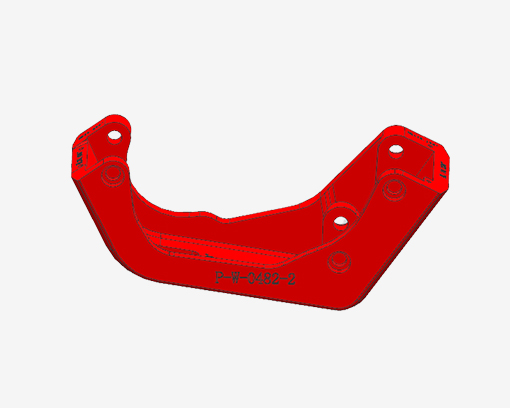Casting is the process of melting metal into a liquid that meets certain requirements and pouring it into a mold, followed by cooling, solidification, and cleaning treatment to obtain castings (parts or blanks) with predetermined shapes, sizes, and properties. The basic process of modern mechanical manufacturing industry. The cost of raw materials produced by casting is low, which can better demonstrate its economy for parts with complex shapes, especially those with complex internal cavities; At the same time, it has a wide adaptability and good comprehensive mechanical performance. However, casting production requires a large amount of materials (such as metal, wood, fuel, molding materials, etc.) and equipment (such as metallurgical furnaces, sand mixers, molding machines, core making machines, sand dropping machines, shot blasting machines, cast iron plates, etc.), and can generate dust, harmful gases, and noise that pollute the environment.
Casting is one of the earliest metal hot working processes mastered by humans, with a history of about 6000 years. In 3200 BC, copper frog castings appeared in Mesopotamia. Between the 13th and 10th centuries BC, China had entered the heyday of bronze casting, with a considerable level of craftsmanship. Representative products of ancient casting include the 875kg Simuwu Fang Ding from the Shang Dynasty, the Yizun Pan from the Warring States period, and the translucent mirror from the Western Han Dynasty. Early casting was greatly influenced by pottery, and most castings were tools or utensils for agricultural production, religion, daily life, etc., with a strong artistic color. In 513 BC, China produced the earliest recorded cast iron piece in the world - the Jin Dynasty bronze tripod (weighing approximately 270 kilograms). Around the 8th century AD, Europe began producing cast iron parts. After the Industrial Revolution in the 18th century, castings entered a new era of serving large industries. In the 20th century, the development speed of casting was very fast, with the development of ductile iron, malleable iron, ultra-low carbon stainless steel, as well as casting metal materials such as aluminum copper, aluminum silicon, aluminum magnesium alloys, titanium based, nickel based alloys, and the invention of new processes for inoculation treatment of gray cast iron. After the 1950s, new processes such as wet sand high-pressure molding, chemical hardening sand molding and core making, negative pressure molding, and other special casting and shot blasting cleaning emerged.

There are many types of casting, which are traditionally divided into: ① ordinary sand casting, including wet sand casting, dry sand casting, and chemically hardened sand casting. ② Special casting can be divided into two types based on the molding material: special casting mainly using natural mineral sand and gravel as the molding material (such as investment casting, mud casting, casting workshop shell casting, negative pressure casting, solid casting, ceramic casting, etc.) and special casting mainly using metal as the molding material (such as metal casting, pressure casting, continuous casting, low-pressure casting, centrifugal casting, etc.). The casting process usually includes: ① preparation of molds (containers that turn liquid metal into solid castings), which can be divided into sand molds, metal molds, ceramic molds, mud molds, graphite molds, etc. according to the materials used. The quality of mold preparation is the main factor affecting the quality of castings; ② The melting and pouring of casting metals, mainly including cast iron, cast steel, and cast non-ferrous alloys; ③ Casting processing and inspection, casting processing includes removing foreign objects from the core and casting surface, cutting sprues, grinding burrs and burrs, as well as heat treatment, shaping, rust prevention treatment, and rough machining.
Kunshan forging manufacturer forging is a processing method that uses forging machinery to apply pressure to metal billets, causing them to undergo plastic deformation to obtain forgings with certain mechanical properties, shapes, and sizes. One of the two major components of forging. Forging can eliminate the casting porosity and welding holes of metals, and the mechanical properties of forgings are generally better than those of castings of the same material. For important parts with high loads and severe working conditions in machinery, forgings are often used, except for simple shaped plates, profiles, or welded parts that can be rolled.
Forging can be divided into: ① Open forging (free forging) according to the forming method. There are two main methods for obtaining the desired forging: manual forging and mechanical forging, which use impact force or pressure to deform the metal between the upper and lower anvil blocks. ② Closed mode forging. The forging of metal billets obtained by compression deformation in a forging die chamber with a certain shape can be divided into forging, cold heading, rotary forging, extrusion, etc. According to the deformation temperature, forging can be divided into hot forging (processing temperature higher than the recrystallization temperature of the billet metal), warm forging (below the recrystallization temperature), and cold forging (at room temperature). The forging materials mainly consist of carbon steel and alloy steel with various compositions, followed by aluminum, magnesium, titanium, copper and their alloys. The original states of materials include bars, ingots, metal powders, and liquid metals. The ratio of the cross-sectional area of a metal before deformation to the die cross-sectional area after deformation is called the forging ratio. The correct selection of forging ratio is closely related to improving product quality and reducing costs.





